One of the most popular destinations in Japan is undoubtedly the Itsukushima Shinto Shrine on Miyajima. The enormous floating torii gate that stands before it is often one of the first images you encounter when planning an itinerary through Japan. In our case, it was also one of the most well-received photos on Instagram, we think it’s due to its fame.
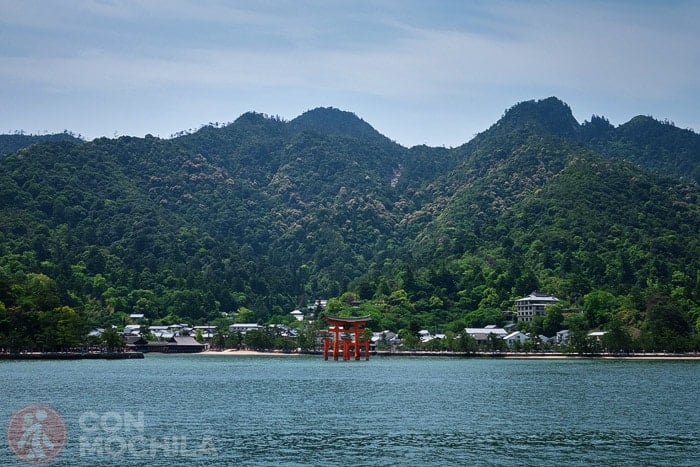
This famous arch, which isn’t actually floating but rather situated on the sand, is located on Itsukushima, also known as the “Island of the Gods,” about 50 km from Hiroshima.
Situated in the Seto Inland Sea, this island is more commonly referred to as Miyajima, meaning “Shrine Island.” It is home to hundreds of peaceful yet perpetually hungry deer—known for their habit of eating paper. The island’s main points of interest are easily accessible on foot, making it a popular day-trip destination for many visitors.
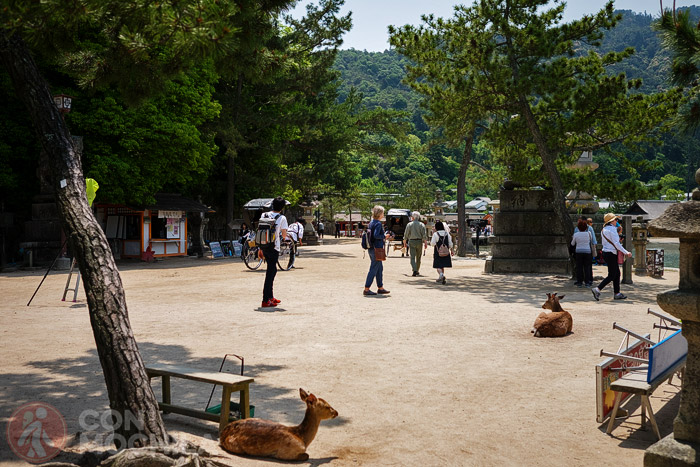
However, staying overnight in a ryokan is also a popular choice. Spending the night on the island offers a serene and relaxing experience, as most day-trippers leave, allowing the quiet and darkness to take over.
The Itsukushima Shrine, designated a UNESCO World Heritage Site in 1996, was constructed “on the water” on the northwest side of Miyajima Island.
Its most famous feature, located several meters in front of the main shrine structures, is the floating torii gate, one of the most iconic sights in Japan.
Although it resembles the thousands of torii gates found throughout the country, this one stands out not only for its unique location but also for its impressive size: standing 16 meters tall and weighing around 60 tonnes, it exudes magnificence and makes visitors feel truly small in its presence.
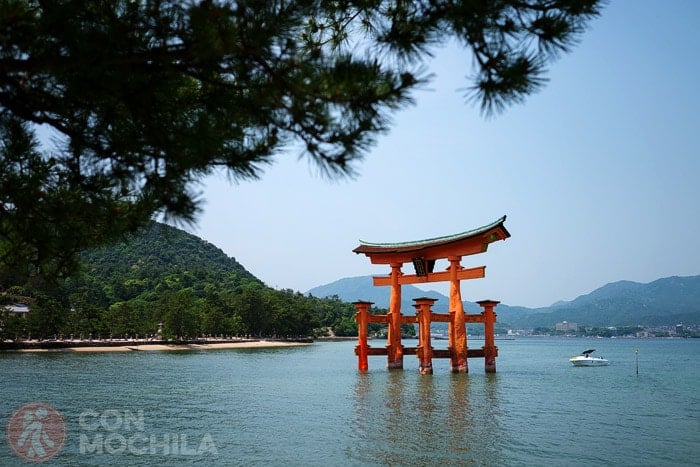
Hundreds of visitors flock here at all hours to capture, in front of this door that separates the world of humans and the world of spirits, what will likely be one of the most unforgettable photos of their trip to Japan.
During low tide, you can clearly see that the torii gate rests on the sand. However, when the water rises, the structure appears to float on the sea, creating an enchanting illusion and giving it its famous nickname: the floating torii.
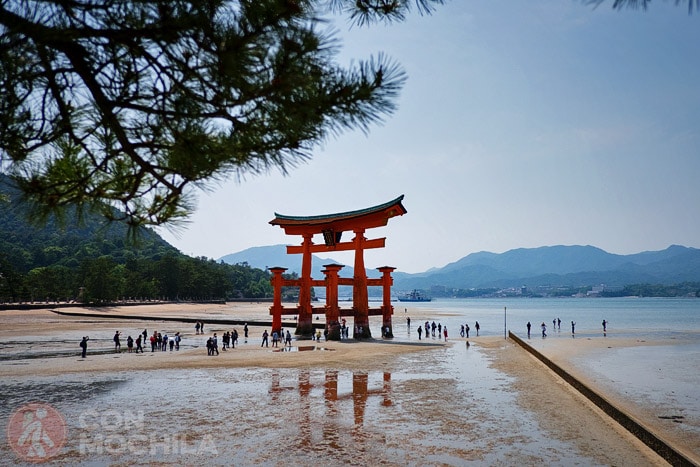
If you spend the entire day on the island and pass by the shrine at different times, you’ll witness two very distinct views. When the tide goes out, tourists can walk right up to the foot of the torii gate for an even closer photo, creating a completely different perspective.
The exact origins of the shrine remain unclear, but what is known is that it has been rebuilt multiple times, often due to fires, including one significant reconstruction in 1870.
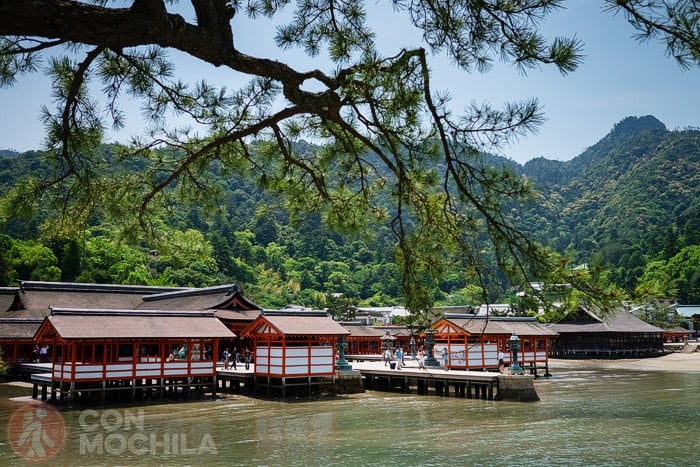
The rest of the shrine complex consists of several other buildings, including the Honden (main hall), Haiden (oratory), Heiden (offering hall), and the Hirabutai (ceremony platform), all connected by wooden walkways built over the sand.
Close to the shrine is the Toyokuni Shrine, also known as Senjokaku. This structure was built in 1587 by Toyotomi Hideyoshi, who intended it to serve as a wooden library, though it was never completed.
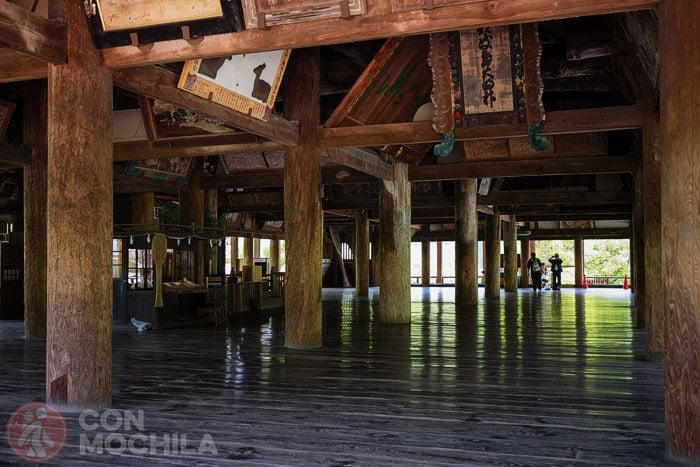
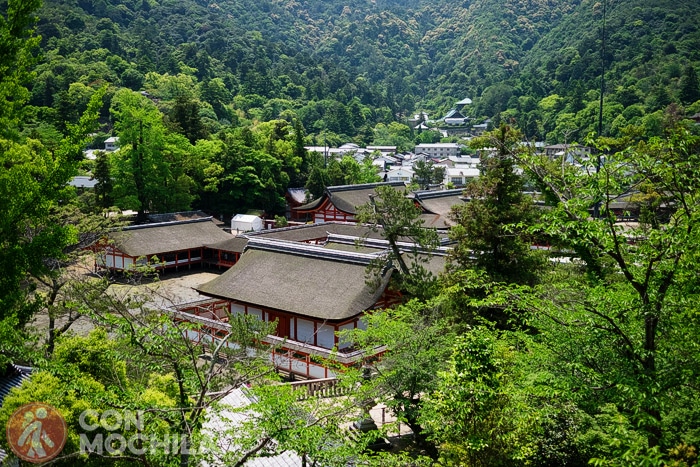
Today, Senjokaku is a relatively simple and austere space with little to see inside, but it offers shaded spots and lovely views of the island from within.
Located right next to Senjokaku, the Five-Story Pagoda was built in 1407. Standing about 27 meters tall.
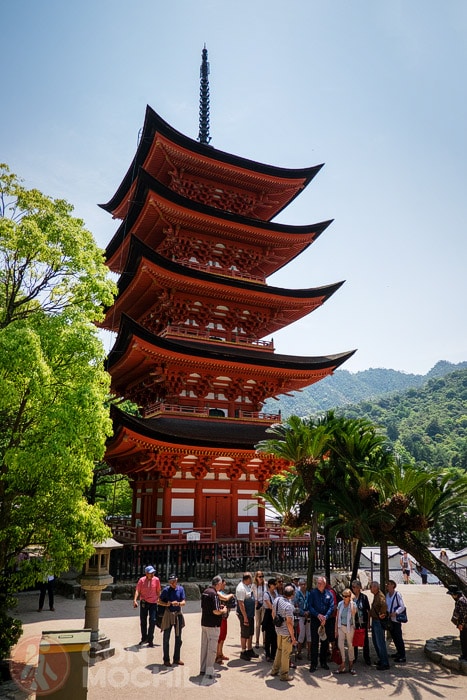
Continuing past the shrine and heading toward the island’s interior, you’ll find Momijidani Park. This tranquil green space is perfect for a peaceful stroll or relaxing by the river of the same name.
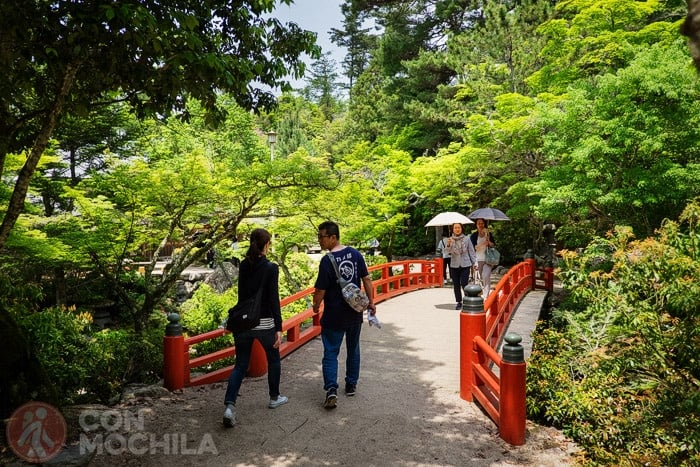
There is a very picturesque bridge in Momijidani Park, and from what we’ve read, the scene becomes even more stunning when the cherry blossoms are in bloom. Wander along the park’s small dirt paths and take a break from the hustle and bustle of tourism for a while.
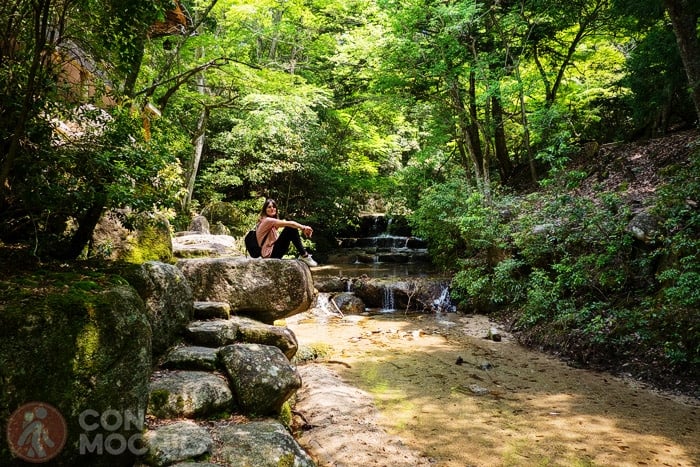
Omotesando Street is the busiest area in Miyajima, where most tourists gather to explore its restaurants, souvenir shops, cafés, and ice cream parlors. It’s the perfect spot to pick up a souvenir, sample the famous oysters, try the sweet Momiji Manju, or enjoy an ice cream before heading back on the ferry.
This lively street runs between the small port where the ferry docks and the shrine, parallel to the seafront.
If you have some extra time to explore the island, you’ll likely come across additional attractions, such as the Daisho-in Buddhist Temple, nestled among the trees, or Daigan-ji, a temple dedicated to Benzaiten. For those wearing suitable footwear, a hike up Mount Misen, the island’s highest peak at 530 meters, is highly rewarding.
Miyajima Island can easily be explored in a day, with most of its highlights accessible within a few hours.
However, staying overnight is a tempting option due to the island’s serene ryokans and the peaceful atmosphere after the tourists have left. We were tempted to stay but found most accommodations to be quite expensive.
If you prefer, there are guided tours in Spanish available to help you explore this enchanting place:
Take a train from Hiroshima to Miyajimaguchi Station. From there, board the JR Miyajima Ferry, which is free to use with the JR Pass.
Once you arrive in Miyajima, it’s easy to explore all the key points of interest on foot.
ACTIVE CAMPAIGN !
Until december 1st, you can get an automatic 15% discount on your Heymondo travel insurance.